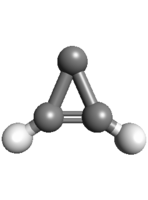|
The transition frequencies were largely taken from
(1) M. Bogey, C. Demuynck, and J. L. Destombes,
1986, Chem. Phys. Lett. 125, 383.
Additional lines were published by
(2) J. M. Vrtilek, C. A. Gottlieb, and P. Thaddeus,
1987, Astrophys. J. 314, 716;
and by
(3) F. J. Lovas, R. D. Suenram, T. Ogata, and S. Yamamoto,
1992, Astrophys. J. 399, 325.
One reportedly overlapped line from (2) was treated as
being due to the ortho line only as already suggested
from the residuals in that work.
All uncertainties were taken as reported. Those from (1)
appear to be, on average, slightly conservative, whereas
those from (2) are, at least, marginally too small.
With respect to first entry of Mar. 2011, additional
rest frequencies were taken from
(4) S. Spezzano, F. Tamassia, S. Thorwirth,
P. Thaddeus, C. A. Gottlieb, and M. C. McCarthy,
2012, Astrophys. J. Suppl. Ser. 200, Art. No. 1.
The reported uncertainties appear to be too optimistic in
part; values have been increased from 5 to 20 kHz
for 3 transitions. Though rather limited in number, these
data improve predictions in particular for the strong
R-branch transitions with high values of
Kc.
Various fits have been tried, some of these can be
found in the fitting spectra section; the prefered one
is also available in the archive. The parameter set
is based on
(5) M. Bogey, C. Demuynck, J. L. Destombes, and
H. Dubus,
1987, J. Mol. Spectrosc. 122, 313.
Predictions with uncertainties larger than
0.5 MHz should be viewed with caution.
At lower temperatures, it may be useful to distinguish
between ortho-c-C3H2 and
para-c-C3H2.
The ortho and para levels are described by
Ka + Kc = odd
and even, respectively, with a spin-weight ratio of 3 : 1. The
JKaKc = 101
level is the lowest ortho state. However, it is
only 1.633190 cm–1 above ground.
Separate
para and
ortho predictions are available up to about
200 GHz along with separate
para and
ortho partition function values. Note:
the spin-weight of 3 for the separate ortho predictions
has been eliminated. Please note also that there are
matrix-elements which mix ortho and para levels.
However, these matrix-elements are small. Nevertheless,
larger effects may occur in cases of accidental
near-degeneracies of certain levels.
The dipole moment was reported in (3).
|
